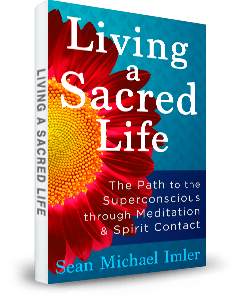As we delve into the realm of neuroscience, an understanding of addiction, habits, and the patterns of the brain begins to form. It’s a complex interplay of chemical, physiological, and sociological components. This intricate dance determines our behaviors, our tendencies, and often, the quality of our lives.
Contents
At its core, neuroscience tells us that our brains are wired for habit formation. The brain’s ability to automate actions and thoughts is a survival mechanism, conserving energy for more critical tasks. However, when this automation (the formation of habits) becomes maladaptive or detrimental, it can lead to addiction.
- Neuroplasticity, the brain’s ability to adapt and change, plays a critical role in the formation of habits and addiction. Our repeated behaviors, whether healthy or harmful, physically reshape our brains over time.
- Then there’s dopamine, a neurotransmitter that rewards us with feelings of pleasure and satisfaction. This potent chemical is a key player in the cycle of addiction.
- Lastly, we cannot overlook the importance of context and environment in shaping our behaviors. Addiction is not solely a matter of brain chemistry, but also our circumstances, relationships, and life experiences.
Understanding the science of addiction, habits, and brain patterns is not about labeling or condemning, but rather about empowering. With knowledge comes the ability to change, to break free from destructive patterns, and to forge new, healthier habits. We are not mere slaves to our biology. We are capable of immense growth and transformation.
So, let’s journey together through the most current theories surrounding addiction, habits, and patterns of the brain. Whether you’re wrestling with addiction, trying to break a stubborn habit, or learning to manage ADD/ADHD, this understanding can be a powerful tool for change.
Addiction: A complex interplay of brain chemistry and behavior
In taking a closer look at addiction, I find it crucial to understand that it’s not a sign of weakness, a moral failing, or a lack of willpower, but rather a complex interplay of brain chemistry and behavior. We’ve come a long way in our understanding of addiction, and it’s high time we dispelled the myths that continue to stigmatize those who struggle with it.
At its core, addiction is a brain disease. It involves changes in the brain’s reward system, where substances or behaviors that trigger feelings of pleasure (like drugs, alcohol, gambling, eating, or sex) lead to an intense desire to repeat the experience. This desire, or craving, can become so strong that it overrides the brain’s normal judgement and impulse control mechanisms, leading to compulsive behaviors despite negative consequences.
“The addicted brain is distinctly different from the non-addicted brain, as manifested by changes in brain metabolic activity, receptor availability, gene expression, and responsiveness to environmental cues”
~National Institute on Drug Abuse (NIDA)
Major Brain Areas
These changes, while complex, are mainly centered around three key areas: The basal ganglia, the extended amygdala, and the prefrontal cortex.
- Basal ganglia: This part of the brain plays a crucial role in rewarding behaviors. When drugs or addictive behaviors stimulate it, the pleasurable effects make the person want to repeat that behavior again and again.
- Extended amygdala: Over time, the basal ganglia’s response to the addictive substance or behavior diminishes, leading to a decrease in the perceived pleasure. This is when the extended amygdala steps in, causing feelings of stress, discomfort, or irritability when not engaging in the addictive behavior.
- Prefrontal cortex: This is the brain’s decision-making center. In addiction, it becomes increasingly impaired, reducing an individual’s ability to resist strong urges or to follow through on decisions to stop their addictive behavior.
Understanding these brain mechanisms can open new avenues for treating addiction. We need to shift our focus from blaming and punishing those who suffer from addiction, to providing them with compassionate care and evidence-based treatments that target these underlying brain changes.
Just as important as understanding addiction’s biological basis is recognizing the role of environmental and psychological factors. These include stress, trauma, and mental health issues like depression and anxiety, which can make individuals more vulnerable to developing addiction. Therefore, comprehensive treatment approaches that address these co-occurring disorders are essential in helping individuals recover from addiction.
Addiction is a complex disease involving multiple components of the brain, as well as psychological and environmental factors. Demystifying it is the first step in developing effective strategies for prevention and treatment, and in fostering empathy and understanding for those affected.
The Psychology of Addiction: Understanding the Emotional Triggers
As someone who has delved deep into the world of psychology, I find the study of addiction particularly fascinating and complex. The psychology of addiction is a multi-faceted field, encompassing emotional triggers, behavioral patterns, and neurological processes (to name a few). Understanding the emotional triggers, in particular, is a crucial step towards addiction recovery.
Emotional triggers are events or experiences that prompt an intense emotional reaction. In those struggling with addiction, these triggers often lead to cravings and subsequent substance use. From a psychological perspective, these triggers are often deeply rooted in past experiences or unresolved emotional issues. Hence, gaining awareness of these triggers is essential for effective addiction management.
Common Emotional Triggers in Addiction
Emotional triggers vary widely from person to person, as they are closely tied to individual experiences and emotional landscapes. However, some emotional triggers are quite common among those with addiction. These may include:
- Stress: Unsurprisingly, stress is a major trigger for many. The urge to use substances can be a misguided attempt to cope with life’s pressures.
- Negative emotions: Feelings of sadness, anger, loneliness, or fear can prompt substance use as a form of self-medication.
- Positive emotions: On the flip side, positive emotions can also be triggers. Celebrations, achievements, or feelings of happiness can lead to substance use, often under the guise of ‘reward’ or ‘celebration’.
Impact of Emotional Triggers on the Brain
The impact of emotional triggers on the brain is quite profound. When a trigger is encountered, the brain releases dopamine—a neurotransmitter associated with pleasure and reward. This creates a strong association between the trigger and the substance, reinforcing the addictive behavior.
“It’s not just about the substance. The brain’s reward circuitry is also a significant player in addiction.”
~Dr. Nora Volkow, Director of the National Institute on Drug Abuse
Understanding these emotional triggers and their impact on the brain can provide significant insights into the mechanisms of addiction. However, the journey doesn’t end there. It’s equally critical to develop strategies for managing these triggers, which can help prevent relapse and promote long-term recovery.
Managing Emotional Triggers
Managing emotional triggers is all about building resilience and establishing healthier coping mechanisms. Here are a few strategies:
- Mindfulness practice: Focus on the present moment, acknowledging your feelings and thoughts without judgment. This can provide a grounding effect, reducing the intensity of emotional triggers.
- Healthy lifestyle: Regular exercise, a balanced diet, and adequate sleep can help regulate emotions and reduce the impact of triggers.
- Professional help: Therapists, counselors and coaches can provide personalized strategies to manage triggers, based on your unique emotional landscape.
Remember, managing emotional triggers is a journey, not a destination. It takes time, patience, and consistent effort. However, with the right approach and support, it is entirely possible to navigate this challenging terrain and reclaim control over your life.
The Brain’s Reward System: How It Reinforces Habits and Patterns
Despite its seemingly unfathomable complexity, our brain is fundamentally a pattern-recognition machine. It thrives upon the familiarity and predictability that patterns provide, and this fact is integral to understanding why habits and patterns can be so hard to break (particularly in the context of addiction).
At the core of this process is the brain’s reward system, a collection of neural structures that regulate our motivations, desires, and cravings. The reward system is an evolutionary marvel, designed to help us prioritize actions that are beneficial for our survival (like eating or procreating). Yet, the very same system can be hijacked by addictive substances or behaviors, creating a vicious cycle that can be incredibly challenging to escape.
Understanding Dopamine: The “Feel-Good” Neurotransmitter
The brain’s reward system primarily operates through the neurotransmitter dopamine. When we engage in activities that our brain perceives as beneficial, dopamine is released, creating a sensation of pleasure and satisfaction (hence often being referred to as the “feel-good” neurotransmitter). The brain recognizes the actions that led to this dopamine release and starts creating neural pathways or patterns to encourage future repetition of these actions. This is how habits are formed.
However, substances such as drugs or alcohol, or behaviors like gambling or compulsive eating, can artificially boost dopamine levels far beyond what natural actions could ever achieve. This causes the brain to overvalue these substances or behaviors, compelling the individual to seek them out repeatedly. The brain, in its quest for survival, is unknowingly reinforcing a cycle of addiction.
The Role of Habits and Patterns
It’s crucial to understand that the brain doesn’t distinguish between healthy and unhealthy patterns. All it perceives is the dopamine release and the subsequent feeling of reward. This is why breaking the cycle can be so difficult. The brain is essentially programmed to repeat actions that lead to dopamine release, thus reinforcing the habit or pattern (even when it’s detrimental to our health).
The reinforcement of these patterns is what leads to the development of a habit. Over time, this habit can become so ingrained that it operates on a near-automatic level, with little conscious thought involved. This is particularly problematic in the context of addiction, as the individual may feel compelled to engage in the addictive behavior even when they no longer derive pleasure from it.
Working With the Brain, Not Against It
Understanding the brain’s reward system and its role in reinforcing habits and patterns is a crucial step towards breaking the cycle of addiction. Rather than trying to fight against our brain’s natural tendencies, we can use this knowledge to our advantage. For example, replacing harmful habits with healthier ones (that also stimulate dopamine release) can be a highly effective strategy. It’s about working with the brain, not against it, to foster healthier patterns and habits.
Remember, addiction and habit formation are complex processes deeply rooted in our brain’s biology. While it’s challenging, change is entirely possible with the right understanding, strategies, and support. I believe that understanding the science behind addiction, habits, and patterns is the first step towards a healthier, happier life.
Habits vs Addiction: What’s the Difference?
As we embark on this journey of understanding, let me clarify two terms that are often interchangeably used but hold significantly different meanings – habits and addiction. Although they both represent repeated actions, the motivations and implications behind them are distinctly different.
Understanding Habits
Habits are behaviors that we perform automatically, often without conscious thought (an example would be brushing your teeth every morning). Our brains form habits to increase efficiency; by making a behavior habitual, the brain conserves resources that would be used in decision-making processes. For most of us, habits are part of our daily routine (these can range from harmless to beneficial; such as daily exercise or reading before bed).
Decoding Addiction
On the other hand, addiction is much more complex and harmful. It is a disease that affects the brain’s reward, motivation, and memory systems, leading to compulsive drug seeking and use, despite harmful consequences (like substance abuse). Unlike habits, addiction is not voluntary or beneficial. The brain changes associated with addiction can be long-lasting, leading to many harmful, often self-destructive, behaviors.
Contrasting Habits and Addiction
The key difference between habits and addiction lies in the nature of the reward. In the case of habits, rewards are healthy and promote positive behavior reinforcement (for instance, the satisfaction of completing a workout). With addiction, the reward is the compulsive seeking of substance-induced pleasure, often leading to a destructive cycle of dependence and withdrawal.
Another crucial distinction is in the impact on daily life. A habit, even if it’s a bad one, generally doesn’t interfere significantly with an individual’s life. An addiction, however, can wreak havoc on personal relationships, professional life, and overall health and well-being.
While habits can often be broken with conscious effort and behavioral changes (a process that can be challenging but by no means impossible), overcoming addiction usually requires professional help and can be a longer and more complex journey.
Remember, understanding the difference between habits and addiction is the first step towards finding the right solutions and interventions. It’s an essential part of the journey towards recovery and change. So, as you navigate through this, remember to be kind to yourself and seek the support you need (you don’t have to do it alone).
The Power of Routine: How to Make It Work For You
Our brains are truly remarkable pieces of machinery (and I use the term ‘machinery’ here not to strip away any sense of the organic, living nature of this organ, but rather to denote the intricate and interconnected networks of neurons that make up our cognitive architecture). One of the many fascinating mechanisms the brain has developed throughout human evolution is the ability to form habits. This ability allows us to automate certain parts of our lives, reducing the cognitive load and freeing up mental resources for other, more demanding tasks. But how does this mechanism work? And more importantly, how can we leverage it to our advantage, especially when faced with challenges such as addiction or conditions like ADD/ADHD?
The Science of Habit Formation
Habit formation is fundamentally a process of learning and memory consolidation. When we repeatedly perform a certain action (like brushing our teeth), our brain starts to recognize the pattern and begins to automate the process. This automation is facilitated by a part of the brain known as the basal ganglia, a structure deeply involved in procedural learning and memory.
From a neurological standpoint, the habit-forming process involves a loop consisting of three stages: the cue, the routine, and the reward. The cue is a trigger that tells your brain to go into automatic mode and which habit to use. The routine can be physical (like brushing your teeth), mental (like recalling an important fact), or emotional (like feeling happy when you see a loved one). The reward is a positive reinforcement that tells your brain that the routine is worth remembering and repeating.
Understanding the Power of Routine
The power of routine lies in its ability to automate our actions, but this power can be a double-edged sword. On the one hand, routines can help us streamline our lives, making complex tasks seem effortless (like driving a car). On the other hand, they can also lead to the formation of unhealthy habits or addictions if the routine is linked to a harmful reward (like the temporary euphoria experienced after smoking a cigarette).
Turning the Tables: Making Routines Work for You
Fortunately, by understanding the science behind habit formation, we can employ strategies to make routines work for us, rather than against us. Here are some strategies:
- Identify the cue: The first step in changing a habit is identifying the cue that triggers it. Once you know what triggers your habit, you can start to change your response to it.
- Change the routine: Once you’ve identified the cue, you can start to change the routine that follows it. For example, if you have a habit of smoking a cigarette after dinner, you could replace the cigarette with a healthier alternative, like a piece of fruit or a short walk.
- Change the reward: Finally, changing the reward can help make a new habit stick. It’s important to choose a reward that is healthy and satisfying, to ensure that your brain recognizes the new routine as beneficial and worth repeating.
Understanding and harnessing the power of routine is a powerful tool in combating addiction, breaking harmful habits, and managing conditions like ADD/ADHD. By leveraging our brain’s natural tendency to form habits, we can create healthier routines that support our wellbeing and free us from destructive patterns.
ADD/ADHD: A Neurological Condition That Affects Behavior
In my many years of studying and teaching about the human brain, I’ve come to understand that ADD/ADHD (Attention Deficit Disorder/Attention Deficit Hyperactivity Disorder) is not merely a set of symptoms, but rather a complex neurological condition that significantly impacts behavior and lifestyle.
Let’s begin by demystifying the neurological aspects of ADD/ADHD. The human brain is an intricate network of neurons (nerve cells) that transmit messages to each other via neurotransmitters. In people with ADD/ADHD, there’s an imbalance in the production and absorption of certain neurotransmitters, primarily dopamine and norepinephrine, which are essential for focus, attention, and impulse control. This imbalance causes the common symptoms associated with ADD/ADHD.
Remember, in the context of ADD/ADHD, symptoms are not the root of the problem, but signals of the underlying neurological imbalance.
Behavioral Aspects
Now, let’s delve into how this neurological condition translates into behavioral impacts. Here are the key ways:
- Impulsivity: The lack of neurotransmitter balance can lead to difficulty in inhibiting responses, resulting in impulsive actions (like interrupting others or making quick, rash decisions).
- Inattention: For individuals with ADD/ADHD, maintaining focus on a single task can be daunting (especially if it’s mundane or repetitive). This is because their brains are not efficiently utilizing dopamine, which plays a crucial role in maintaining attention.
- Hyperactivity: An excess of unused mental energy often manifests as physical restlessness (such as fidgeting or inability to sit still), a characteristic feature of ADHD.
In my experience, understanding these behavioral manifestations is the first step towards managing ADD/ADHD. It’s a journey of self-awareness, self-acceptance, and developing strategies that work for you or your loved one. Remember, no two people with ADD/ADHD are the same – their experiences, strengths, and challenges are unique.
Addressing ADD/ADHD goes beyond managing symptoms. It’s about understanding the root cause (the neurological imbalance) and developing strategies to boost the brain’s performance. This approach may include lifestyle changes, cognitive behavioral therapy, mindfulness techniques, or medication under medical supervision.
Let’s not forget that ADD/ADHD, like any other neurological condition, requires empathy, understanding, and support. Let’s strive to create a more inclusive and understanding environment for those living with ADD/ADHD.
If you’d like to understand more about ADD/ADHD, read, “ADD-ADHD: Supporting the Ones We Love.”
Breaking Bad Habits: Understanding the Power of Neuroplasticity
As we delve into the realm of breaking bad habits, it’s essential to understand the concept of neuroplasticity. This idea, which has revolutionized our comprehension of the brain’s abilities, refers to the capacity of the brain to change and adapt in response to experiences, environment, and behavior (a process previously thought to be limited to early childhood).
Our brains are not static entities; they are dynamic and ever-evolving. Each action, thought, and experience can create or reinforce neural pathways, leading to habitual patterns of thought and behavior. It’s through the power of neuroplasticity that habits – both good and bad – form and maintain their stronghold.
When we repeatedly engage in a particular behavior (like smoking a cigarette or consuming alcohol), the brain begins to create and strengthen neural pathways associated with that action. Over time, these reinforced pathways lead to automatic responses – the ingrained habits we find so hard to break.
But here’s the good news. Neuroplasticity doesn’t just work one way. The same process that enables the formation of bad habits can also facilitate their dismantling. By creating new, healthier neural pathways and consistently reinforcing them through repeated behavior, we can effectively ‘rewire’ our brains.
Working With Neuroplasticity
Remember, neuroplasticity is a double-edged sword. It’s both the reason habits form and the key to breaking them. Understanding this is the first step towards making meaningful change in your life.
So, how can we harness the power of neuroplasticity to break bad habits? Here are some strategies:
- Practice mindful awareness: When you become mindful, you become aware of your thoughts, feelings, and behaviors. This awareness can allow you to identify the unhealthy habits you’ve formed and understand the triggers that lead you to engage in these behaviors.
- Replace bad habits with good ones: Rather than trying to eliminate a habit, which leaves a void, replace it with a healthier one. For example, if you have a habit of snacking on junk food when you’re stressed, replace it with a healthier habit, like going for a walk or practicing deep breathing exercises.
- Consistency is key: Remember, neural pathways are strengthened through repetition. Be consistent with your new habits, and over time, they will become as automatic as the old ones were.
Breaking bad habits is not easy — it requires time, patience, and dedication. But by understanding and harnessing the power of neuroplasticity, you can take significant strides toward creating healthier patterns and a better life.
ADD/ADHD and Addiction: The Connection and How to Get Help
As we delve into the connection between ADD/ADHD and addiction, it is important to note that this relationship is multifaceted and complex. Many individuals who struggle with Attention Deficit Disorder (ADD) or Attention Deficit Hyperactivity Disorder (ADHD) often turn to substances as a form of self-medication, resulting in a vicious cycle of worsening mental health symptoms and further drug or alcohol use. However, understanding this connection is the first step in seeking appropriate help and breaking free from these destructive patterns.
Why does ADD/ADHD often co-occur with Substance Use Disorders (SUD)?
Research has shown a strong correlation between ADD/ADHD and SUD. This relationship can be attributed to various factors such as genetic vulnerabilities, environmental influences, and neurobiological alterations. For instance, individuals with ADD/ADHD have a tendency to seek out stimulatory experiences, which can lead to substance use. Moreover, they may use drugs or alcohol as a means to cope with the challenges posed by their condition, such as difficulty with concentration, impulsivity, and restlessness (to name a few).
Understanding this connection provides a framework for effectively addressing and treating both conditions simultaneously.
Strategies for Managing ADD/ADHD and Addiction
The management of ADD/ADHD and addiction requires a comprehensive and multi-faceted approach. Here are some strategies that can help:
- Seek professional help: A qualified health professional can provide a comprehensive assessment and develop a personalized treatment plan that addresses both ADD/ADHD and addiction.
- Engage in therapy: Cognitive Behavioral Therapy (CBT) and other therapeutic approaches can help individuals change their negative thought patterns and behaviors associated with both conditions.
- Medication management: Proper medication can be an essential part of treatment, especially for those with ADD/ADHD. However, it’s important to ensure that the use of these medications is closely monitored to prevent potential misuse or addiction.
- Lifestyle changes: Regular exercise, balanced diet, adequate sleep, and stress management can play a crucial role in managing symptoms of both ADD/ADHD and addiction.
Remember, the journey to recovery is not a linear process, and it’s okay to ask for help along the way.
Breaking Free from the Cycle of Addiction
Breaking free from the cycle of addiction is challenging, but it is entirely possible. Recognizing the problem and seeking help are the first crucial steps. It may require a lot of effort and commitment, but the resulting freedom, health, and happiness are undoubtedly worth it.
It is not the strength of the addiction, but the strength of the person battling it, that ultimately determines the outcome.
ADD/ADHD and addiction don’t have to define you. With the right support and treatment, you can overcome these challenges and lead a fulfilling life. Let the understanding of the science behind these conditions guide you in your recovery journey.
In Conclusion
Spiritual Counseling, Hypnotherapy, Coaching, and Energy Healing all play a part in helping you with transformation. If you’d like someone to discuss this with, please contact me.
If you’d like to discuss using hypnosis to change your eating habits and/or control your weight, please contact me for a consultation.
You may want to read “Habits, Addictions, Patterns: How to Retrain the Brain.”











